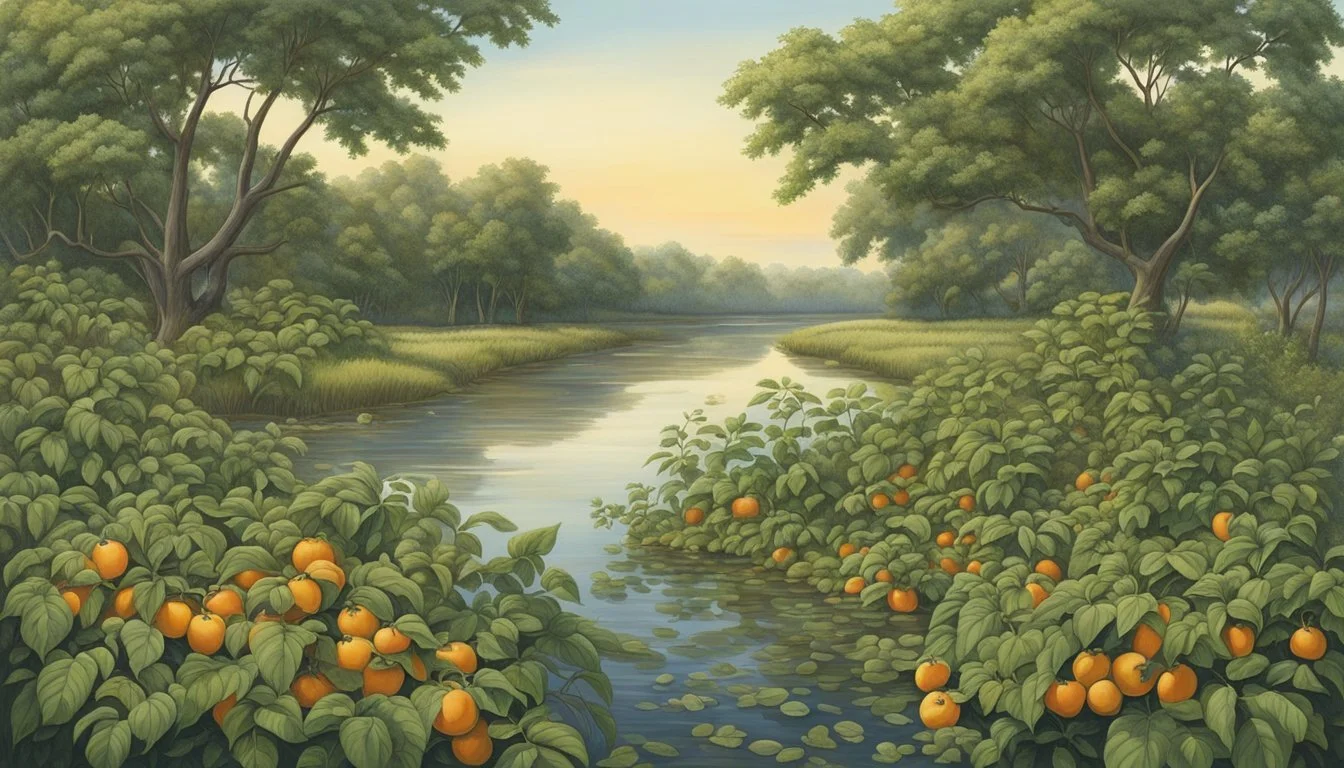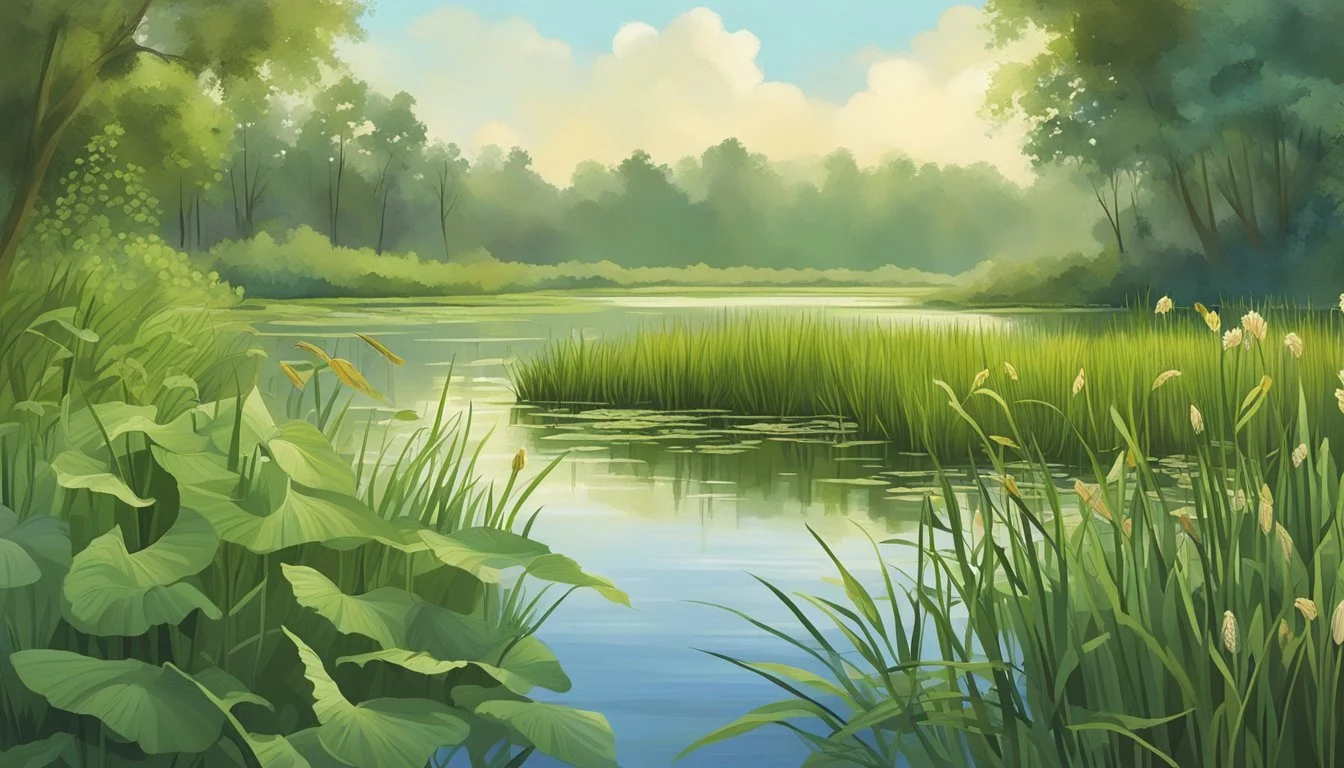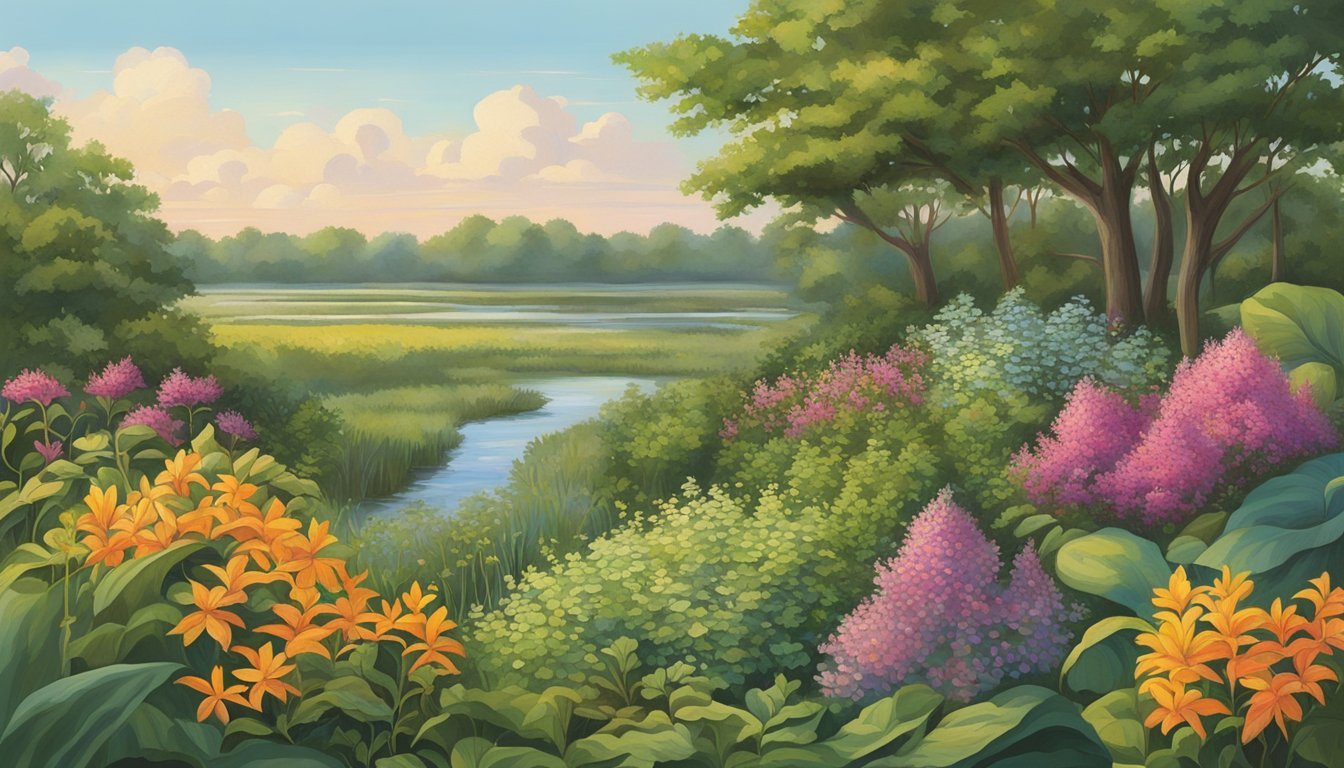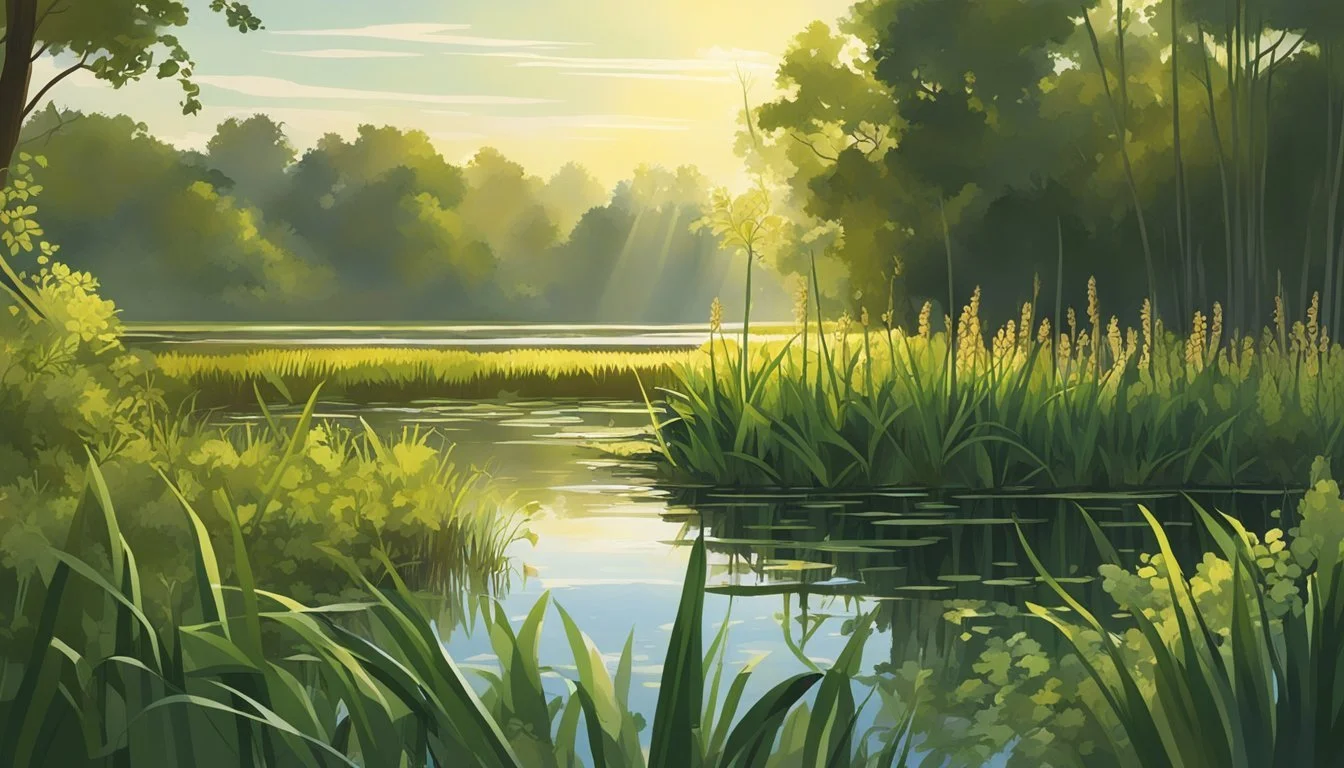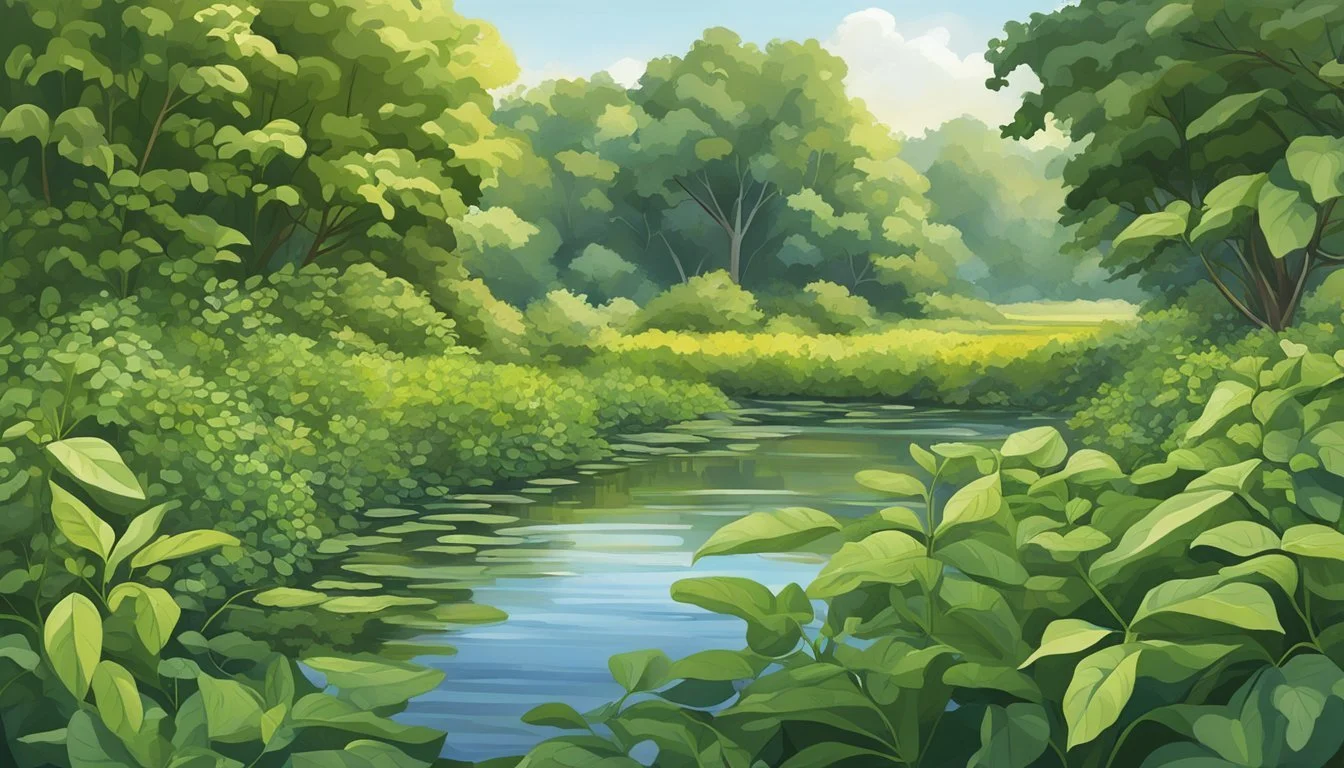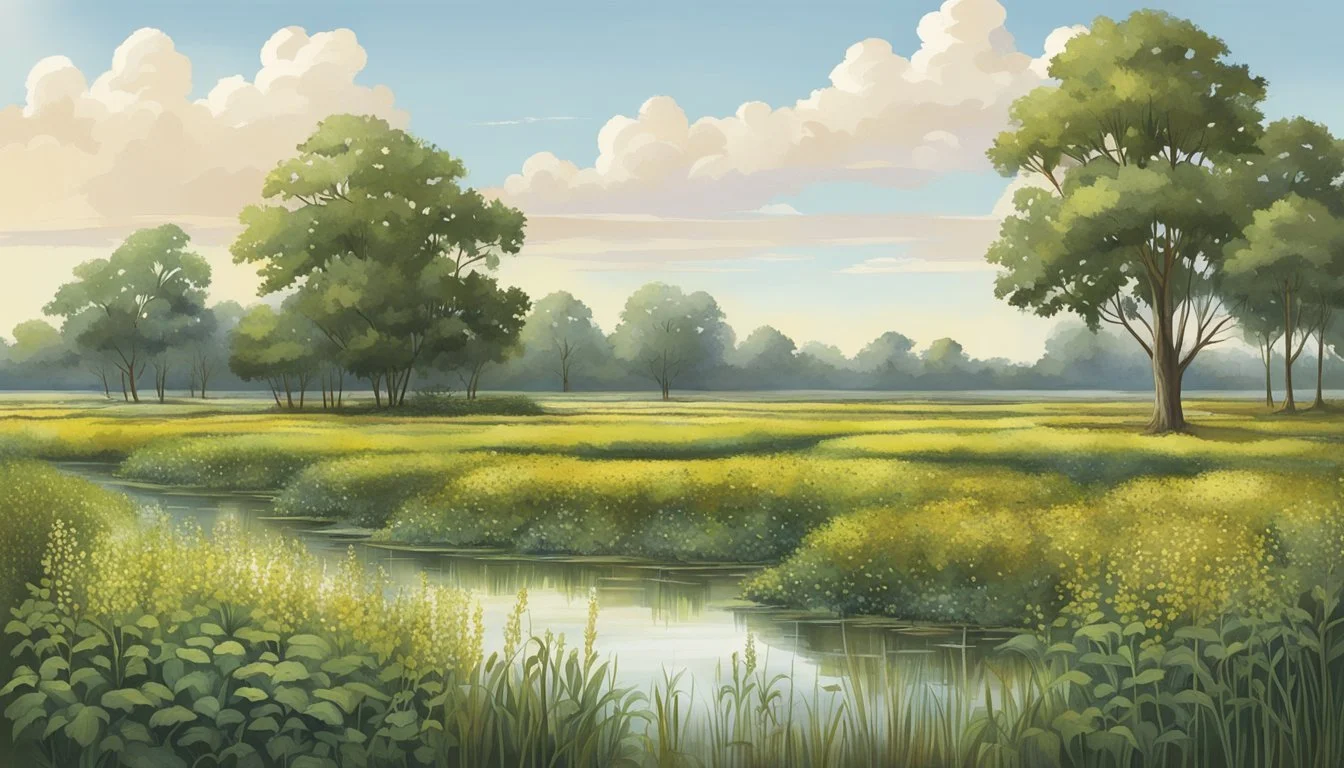Mississippi Delta Native Edible Plants
Essential Guide to Wild Harvesting
The Mississippi Delta, with its rich soil and diverse ecosystems, is home to an impressive array of native edible plants. Foraging in this region can be a rewarding experience for those knowledgeable about the various species available. From the Delta to the Piney Woods, one can find chanterelles, oyster mushrooms, and chicken of the woods, each providing unique flavors and nutritional benefits.
Foraging isn't just about collecting food; it also offers an opportunity to connect with nature and learn about the environment. The Delta's mix of wetlands, forests, and open fields contributes to the variety of edible plants found here. Whether it's the wild blueberries dotting the landscape or the elusive pawpaw, each plant tells a story of Mississippi's natural heritage.
Safety and proper identification are crucial when foraging. Some plants can contain toxic parts, so it's essential to only consume the specified edible portions. Foraging in Mississippi Delta, with proper respect for nature and regulations, promises a unique and enriching adventure for enthusiasts and novices alike.
Historical Context of Foraging in the Mississippi Delta
Foraging in the Mississippi Delta has a rich history that intertwines with both Native American and settler cultures. The region's fertile floodplains between the Yazoo and Mississippi Rivers provided a diverse habitat for many native plants.
Native American tribes, including the Choctaw and Chickasaw, were the original foragers. They utilized plants like sassafras (Sassafras albidum), known for its medicinal properties and nutritional value. These tribes passed down knowledge of edible wild plants through generations, ensuring youth learned essential survival skills.
When European settlers arrived, they too began to explore and adapt these foraging practices. Settlers often relied on local flora during their initial years when cultivated crops were not yet established. They incorporated both native and naturalized plants into their diets, valuing the rich sources of vitamins and minerals found in species such as wild blueberries and pecans.
Key Native Plants:
Sassafras (Sassafras albidum)
Wild Blueberries (Vaccinium spp.)
Pecans (Carya illinoinensis)
Children were often introduced to the practice of foraging at a young age. They learned to identify edible plants and distinguish them from poisonous ones, an important survival skill in the Mississippi Delta's wilderness.
The tradition of foraging has endured, blending the knowledge of native tribes with the experiences of early settlers. This cultural heritage continues to be a part of the region's identity, emphasizing a connection to the land and its natural bounty.
Understanding the Delta Ecosystem
The Mississippi Delta is defined by its complex ecosystems, with diverse climates, soils, and landscapes including forests and prairies. These factors shape the unique flora and fauna of the region.
Climate and Seasons
The Mississippi Delta experiences a humid subtropical climate. Summers are hot and humid, with temperatures often reaching the high 90s (°F). Winters are mild, typically ranging from the low 40s to the upper 50s (°F). Rainfall is fairly distributed throughout the year, though spring and summer see higher precipitation rates.
This climate supports a variety of plant life, from seasonal greens to year-round vegetation. Spring brings tender shoots and blossoms, while summer supports more robust species. Fall and winter have their own set of hardy plants adapted to cooler temperatures.
Soils and Topography
Delta soils are known for their fertility, primarily made up of alluvial deposits. These rich sediments are carried and deposited by the Mississippi River, forming layers of silt, clay, and organic matter. This nutrient-rich medium supports a wide range of plant species, from crops to native flora.
The topography is mostly flat with some areas of gentle slopes. This flatness helps in the spread of floodwaters, aiding in the natural irrigation of the land. Consequently, wetlands are a significant feature of this region, playing a critical role in sustaining biodiversity.
Forest and Prairie Systems
The delta hosts a variety of ecosystems, including extensive forested areas and prairie systems. Bottomland hardwood forests are prevalent, with species like oaks, hickories, and cypress trees that thrive in wet conditions. These forests are crucial habitats for local wildlife.
Prairies, though less common, add to the ecological diversity. They are characterized by grasses and wildflowers, offering a different habitat for various plant and animal species. Both forests and prairies contribute to the region's ecological richness, supporting a wide range of wetland flora such as cattails and swamp roses.
Iconic Mississippi Delta Plants
The Mississippi Delta is home to a variety of native plants that thrive in its unique ecosystem, including several notable trees, shrubs, and wildflowers.
Trees
Southern magnolia (Magnolia grandiflora) stands out as an iconic tree in the Mississippi Delta. Known for its large, fragrant, white flowers and glossy evergreen leaves, it is a symbol of Southern landscapes. It contributes significantly to the local biodiversity and provides shade and habitat for wildlife.
Another key tree is the bald cypress. Found in wet, swampy areas, this tree is recognized by its "knees" that protrude from the water. The bald cypress provides stability to the ecosystem, preventing soil erosion and supporting aquatic life.
Water tupelo is another characteristic tree of the Delta's floodplain forests. It thrives in saturated soils, producing nutritious fruit for wildlife. Its ability to withstand prolonged flooding makes it essential for maintaining the health and integrity of wetland habitats.
Shrubs
American beautyberry is a standout shrub, recognized for its bright purple berries that appear in late summer. These berries are not only visually striking but also provide a crucial food source for birds and other wildlife during the colder months.
Swamp rose is another significant shrub, thriving in moist, wooded areas. Its fragrant pink flowers bloom in early summer, attracting pollinators such as bees and butterflies.
Wax myrtle is notable for its aromatic leaves and waxy berries, which are used by many bird species during migration. This shrub also plays a role in nitrogen fixation, enhancing soil fertility and supporting other plant life.
Wildflowers
Purple coneflower (Echinacea purpurea) is a native wildflower that graces the Delta with its vibrant purple petals and prominent cone-shaped centers. It is well-regarded for its medicinal properties and plays a role in supporting pollinators, especially butterflies and bees.
Big bluestem is a dominant grass in the Delta, often considered a wildflower due to its importance in prairie ecosystems. It provides vital cover and food for many ground-nesting birds and insects.
The Southern wildflowers, including species like black-eyed Susan and blanket flower, add bursts of color to the landscape. These wildflowers are not only beautiful but crucial for maintaining pollinator populations, which are essential for the health of the environment.
Edible Plants and Their Uses
Mississippi Delta offers a richness of native edible plants that can be foraged for their fruit, medicinal properties, and more. These edible plants are nutritious and can be a valuable part of a sustainable lifestyle.
Fruit-Bearing Plants
The American Beautyberry (Callicarpa americana) is notable for its vibrant purple berries. These can be eaten raw but are often made into jellies due to their astringent taste.
Muscadine (Vitis rotundifolia) grapes are abundant in the region. They contain high levels of vitamins and antioxidants and are used in jams, juices, and wines.
Persimmons (Diospyros virginiana), native to the area, become sweet and flavorful when fully ripe and are a great source of vitamins A and C.
Red Mulberry (Morus rubra) produces berries that can be consumed fresh or dried and used in baking and preserves.
Edible Mushrooms
Chanterelles (Cantharellus spp.) are found in the local forests, recognizable by their yellow-orange hue and fluted caps. These mushrooms have a mildly peppery taste and are sought after for culinary use due to their rich flavor.
Another notable mushroom is the morel (Morchella spp.), which is prized for its nutty flavor and texture. These mushrooms should be cooked thoroughly before consumption to ensure safety.
Foragers also look for oyster mushrooms (Pleurotus ostreatus), which grow on decaying hardwood and are valued for their delicate and slightly sweet taste.
Herbal and Medicinal Plants
Sassafras (Sassafras albidum) boasts aromatic leaves and roots that have been traditionally used to make tea, with potential antioxidant properties.
Elderberry (Sambucus canadensis) is known for its dark purple berries, often turned into syrups or teas believed to support immune health due to their high vitamin C content.
The Greenbrier (Smilax spp.) has young shoots and roots that are edible and can be used in various dishes, both raw and cooked, and may have various health benefits.
Wild Onion (Allium canadense), commonly mistaken for wild garlic, provides a strong onion flavor and can be used similarly to domesticated onions in cooking.
This collection of edible plants provides nutritional value and versatility in culinary and medicinal uses, showcasing the rich biodiversity of the Mississippi Delta.
Sustainable Foraging Practices
Foraging for wild foods in the Mississippi Delta offers rich opportunities to connect with nature and enjoy native edible plants. However, it's vital to practice sustainable foraging to protect these ecosystems.
One key practice is minimal impact. Avoid creating new trails by sticking to established paths. This helps to preserve the plant life and prevents soil erosion.
Never overharvest. Only take what you need and ensure that you're leaving enough for the plant to continue growing. This ensures that the plant population remains healthy and viable for future foragers.
When foraging, it's important to leave no trace. Take all your trash with you and avoid disturbing the surrounding flora and fauna.
Educating oneself about biodiversity is crucial. Understanding different plant species and their roles in the ecosystem helps in making informed decisions while foraging.
It's advisable to forage alone or in small groups. Large groups can cause more significant disruption to the environment and increase the risk of overharvesting.
Caution is essential. Always be sure of the plant species before consuming them. Some plants may look similar but can be toxic.
Engaging in environmental education can enhance sustainable foraging practices. Learning about local flora, conservation techniques, and ethical harvesting can foster a deeper respect for nature.
By following these practices, foragers can enjoy the bounty of the Mississippi Delta while ensuring that these natural resources remain available and thriving for years to come.
Integrating Native Plants in Local Cultivation
Integrating native plants in local cultivation promotes biodiversity, supports pollinators, and aligns landscaping practices with ecological principles. The following sections detail strategies for gardening, landscaping, and conservation efforts through the use of native plants.
Gardening with Native Plants
Using native plants in gardening enhances biodiversity and establishes a resilient garden. Native species such as Elliott's Blueberry offer benefits including food sources for local wildlife. Gardeners should consider soil conditions, light availability, and water needs to select appropriate plants.
Native plants are well-adapted to local climates, reducing the need for pesticides and fertilizers. This can result in cost savings and a healthier environment. It’s essential to obtain plants from reputable sources to avoid invasive species.
Native Landscaping
Native landscaping transforms residential and public spaces into sustainable ecosystems. It emphasizes the use of local flora to create aesthetically pleasing and environmentally friendly landscapes. Butterfly Milkweed and Wild Bergamot are examples of plants that attract pollinators and add beauty to gardens.
Landscaping with native plants reduces water usage and maintenance needs due to their adaptation to local climate conditions. This practice also provides habitat for native wildlife, promoting a balanced ecosystem.
Conservation Through Cultivation
Cultivating native plants aids conservation by preserving local species and their habitats. Projects like the Mississippi Native Plant Society encourage the use of indigenous plants to support local ecosystems. Native plants such as the Purple Coneflower help sustain pollinator populations critical for agriculture.
Conservation through cultivation also involves educating the community about the ecological benefits of native plants. Workshops, plant sales, and educational programs can engage the public and promote sustainable practices. This collective effort can lead to significant ecological improvements over time.
Engagement and Education
The Mississippi Delta offers a variety of programs that aim to engage and educate the community about native edible plants. Focused initiatives are designed specifically for both adults and children to explore and learn about their natural environment.
Community Programs
Several programs are available to the community through resources such as the Mississippi Delta Nature and Learning Center. These programs often include workshops and guided tours that highlight the diversity of native edible plants in the area. Participants can learn about plant identification, sustainable harvesting practices, and the culinary uses of these plants.
Additionally, partnerships with organizations like the Pascagoula River Audubon Center help to enhance environmental education. These programs foster a deeper connection between the community and their local ecosystem, emphasizing the importance of environmental stewardship.
Youth Education
Children aged 1-12 can engage in various hands-on programs offered by the Mississippi Delta Nature and Learning Center. The Heart and Soul Children’s Garden provides a dynamic space where kids can experience interactive learning through play. This 2-acre garden features nine different themed gardens, each designed to teach children about plant life and environmental responsibility.
Through field trips and the AmeriCorps Youth Environmental Stewardship Program, young learners develop a strong foundation in ecological principles. These activities encourage children to explore their surroundings, fostering an early appreciation and respect for nature and sustainable practices.
Wildlife Interactions with Native Edibles
Wildlife in the Mississippi Delta has a symbiotic relationship with native edible plants. Various animals, such as deer and rabbits, rely on these plants for sustenance.
Birds, particularly local species like the Northern Cardinal and the American Robin, consume berries, seeds, and insects found on these plants. This interaction aids in both the diet of the birds and the pollination of the plants.
Pollinators, including bees and butterflies, play a crucial role. They are attracted to flowering plants like Sassafras (Sassafras albidum) and Wild Blueberries. Through pollination, these insects enable the reproduction of plants, ensuring the propagation of these essential species.
Here is a sample of wildlife interactions with native plants:
Animal/Plant Interaction Deer Browse on leaves and shoots Northern Cardinal Eat berries; promote seed dispersal Bees Pollinate flowers Rabbits Feed on tender plant parts Butterflies Attracted to nectar-rich flowers
The relationship extends to the local ecosystem, aiding in maintaining biodiversity. For example, berries from Elderberry plants (Sambucus spp.) serve as a food source for both small mammals and birds.
Additionally, the presence of these plants supports the lifecycle of many insects, which in turn provides food for a variety of other wildlife, creating a balanced and interdependent environment.
Guidelines for Identification and Harvesting
Caution is paramount when identifying and harvesting native edible plants in the Mississippi Delta. Incorrect identification can lead to consuming toxic plants. Always rely on guides and consult experts if unsure.
When identifying plants, look for unique traits. For example, morels feature a honeycombed cap and greenbrier has thorny stems and heart-shaped leaves. Use reliable sources for matching these characteristics.
Mushrooms such as Chicken of the Woods grow on trees and have a bright orange color. They should be harvested only when young and tender. Old mushrooms can become tough and unpalatable.
American Beautyberry is identifiable by its clusters of bright purple berries. These berries are safe to eat and can be used in various recipes.
Andropogon Gerardii, or big bluestem, can be identified by its tall stature and “turkey foot” seed head. It plays a significant role in maintaining local wildlife habitats and should be harvested sustainably.
Harvest plants during their peak seasons. For example, morels are typically found in spring. Always leave enough of the plant behind to ensure its survival and regrowth. This practice supports the ecosystem and encourages sustainable foraging.
Be mindful of your surroundings. Foraging can disturb the habitat if not done carefully. Avoid over-harvesting in one area to prevent ecosystem damage.
Lastly, plant parts matter. Some plants, such as those listed by the Mississippi State University Extension Service, have both edible and poisonous parts. Always verify which parts are safe to consume to minimize the risk of poisoning.
Health Benefits and Nutritional Information
Native edible plants in the Mississippi Delta offer rich nutritional profiles important for health. Many of these plants are excellent sources of vitamins and minerals, contributing to overall well-being.
Elderberry is known for its high vitamin C and antioxidant content, which may support the immune system. It also contains dietary fiber, improving digestion.
Persimmon provides essential nutrients such as vitamins A and C, and a good amount of dietary fiber. This fruit aids in vision and skin health.
Callicarpa americana, or American beautyberry, offers benefits through its antioxidant properties. The berries are also thought to possess anti-inflammatory effects.
Several wild mushrooms found in Mississippi, like chanterelles and morels, are rich in B vitamins and vitamin D, which are vital for energy production and bone health. They also provide a meaty texture to dishes.
The wide variety of edible plants ensures diverse nutrient sources. For example, many wild greens, like chickweed and dandelion, are packed with vitamins A and K, which support vision and blood clotting.
Below is a simplified table listing a few native edible plants and their primary nutrients:
Plant Primary Nutrients Elderberry Vitamin C, Antioxidants, Fiber Persimmon Vitamins A and C, Fiber Callicarpa americana Antioxidants, Anti-inflammatory Chanterelle Mushrooms B Vitamins, Vitamin D Chickweed Vitamins A and K Dandelion Greens Vitamins A and K, Calcium
These native plants not only offer delicious flavors but also provide essential nutrients necessary for maintaining good health.
Culinary Applications and Recipes
Mississippi Delta's native edible plants offer a variety of culinary uses. They provide unique flavors and nutritional benefits essential for creating delicious dishes.
Sassafras is commonly used for its leaves, which can be dried and ground into filé powder. This powder is a key ingredient in traditional gumbo, adding a slightly earthy flavor and acting as a thickener.
Greenbrier shoots are versatile. These tender tips can be used in salads, stir-fries, or simply sautéed in butter for a side dish.
Dewberries
Dewberries, resembling blackberries, are great for making jams, pies, and cobblers.
Simple Dewberry Jam Recipe:
Ingredients: 4 cups dewberries, 2 cups sugar, juice of 1 lemon.
Steps:
Combine dewberries and sugar in a pot.
Add lemon juice.
Cook over medium heat, stirring until thickened.
Muscadine grapes are perfect for wines and jellies. They have a robust flavor profile that enhances both sweet and savory recipes.
Blue Vervain can be used to make herbal teas. Steep the dried flowers and leaves in hot water for a calming beverage.
Passionflower is another plant whose leaves and flowers can be infused into teas. It’s known for its mildly sedative properties, perfect for a relaxing drink.
Including these wild foods in everyday meals connects one with the traditional culinary practices of the Mississippi Delta. Experiment with these recipes and discover the rich flavors found in native plants.
Ethical Considerations and Legal Restrictions
When foraging for native edible plants in the Mississippi Delta, it is essential to respect local laws and regulations. Foragers must obtain proper permits and adhere to guidelines laid out by regional authorities to avoid legal consequences.
Prioritize conservation by ensuring that plant populations are not depleted. Overharvesting can lead to the extinction of certain species and disrupt local ecosystems. Foragers should only collect plants assessed as sustainable.
Environmental stewardship involves being mindful of the ecosystem’s health. Ethically, foragers must avoid damaging other non-targeted plants or disturbing wildlife habitats. Maintaining this balance helps preserve the biodiversity of the region.
Understanding sustainability is key. Foragers should harvest only what they need and leave sufficient plants to propagate. This practice ensures that the plant populations can recover and thrive for future generations.
Guidelines for foraging:
Always ask for permission on private lands.
Educate oneself on the identification of plants to avoid harmful mistakes.
Be aware of and follow seasonal restrictions put in place to protect plant cycles.
Violating ethical and legal standards not only risks fines or penalties but also undermines community trust. Adhering to these principles ensures a harmonious relationship between foragers and the natural world.
Future Prospects and Ongoing Research
The study of native edible plants in the Mississippi Delta is gaining momentum. Researchers and conservationists are increasingly aware of the importance of preserving biodiversity.
Conservation efforts play a crucial role in maintaining these ecosystems. Preservation of native species is vital for ensuring sustainable food sources.
Ongoing research focuses on the potential nutritional benefits of these plants. Studies aim to fill gaps in existing nutrition data, particularly for non-commercial wild forageable foods.
Climate change impacts these native ecosystems. Scientists are examining how shifts in temperature and rainfall affect plant growth and availability.
Biodiversity research highlights the importance of protecting various species to maintain ecological balance. This ensures the continued availability of edible plants for future generations.
Ecosystem health is directly tied to the conservation of these native plants. Protecting natural habitats from overharvesting and faulty harvest methods is essential.
List of key focus areas:
Nutritional analysis
Impact of climate change
Conservation strategies
Biodiversity protection
The integration of local knowledge and advanced scientific techniques can lead to sustainable harvesting practices, benefiting both the environment and local communities.


